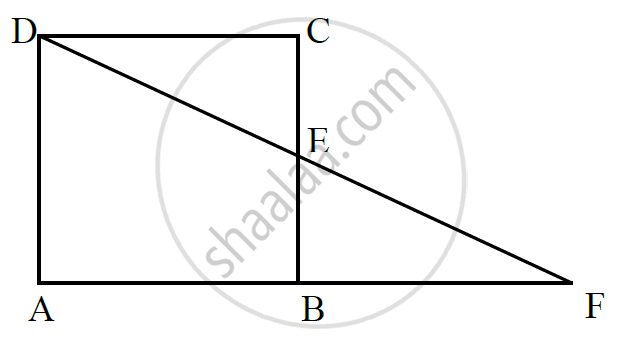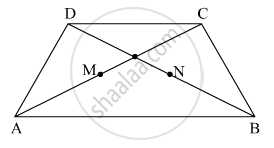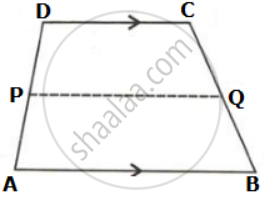Advertisements
Advertisements
प्रश्न
The following figure shows a trapezium ABCD in which AB // DC. P is the mid-point of AD and PR // AB. Prove that:
PR = `[1]/[2]` ( AB + CD)

उत्तर
Here from the triangle,
ABD P is the midpoint of AD and PR || AB,
therefore Q is the midpoint of BD
Similarly, R is the midpoint of BC as PR || CD || AB
From triangle ABD,
PQ = `1/2` AB ...(1) ...[by Mid-point theorem]
From triangle BCD,
QR = `1/2` CD ...(2) ...[by Mid-point theorem]
Now (1) + (2)
PQ + QR = `1/2 "AB" + 1/2 "CD"`
PR = `1/2`(AB + CD)
Hence proved.
APPEARS IN
संबंधित प्रश्न
In below fig. ABCD is a parallelogram and E is the mid-point of side B If DE and AB when produced meet at F, prove that AF = 2AB.

ABCD is a parallelogram, E and F are the mid-points of AB and CD respectively. GH is any line intersecting AD, EF and BC at G, P and H respectively. Prove that GP = PH
BM and CN are perpendiculars to a line passing through the vertex A of a triangle ABC. If
L is the mid-point of BC, prove that LM = LN.
In the adjacent figure, `square`ABCD is a trapezium AB || DC. Points M and N are midpoints of diagonal AC and DB respectively then prove that MN || AB.

In ΔABC, D, E, F are the midpoints of BC, CA and AB respectively. Find FE, if BC = 14 cm
Prove that the figure obtained by joining the mid-points of the adjacent sides of a rectangle is a rhombus.
In the given figure, ABCD is a trapezium. P and Q are the midpoints of non-parallel side AD and BC respectively. Find: DC, if AB = 20 cm and PQ = 14 cm
In ΔABC, D, E and F are the midpoints of AB, BC and AC.
Show that AE and DF bisect each other.
The quadrilateral formed by joining the mid-points of the sides of a quadrilateral PQRS, taken in order, is a rhombus, if ______.
The figure formed by joining the mid-points of the sides of a quadrilateral ABCD, taken in order, is a square only if, ______.
